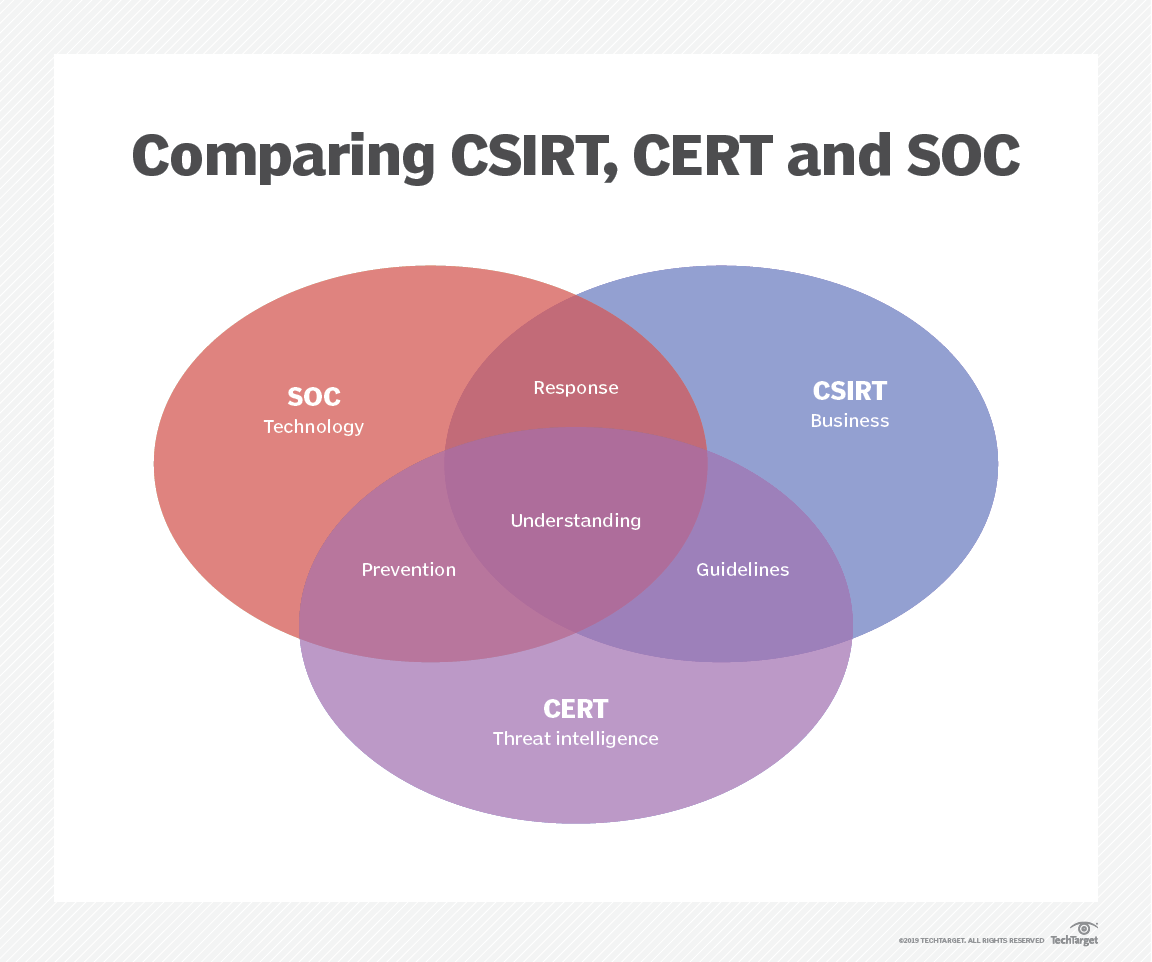CERT, CSIRT or SOC?
When it comes to responding to cybersecurity incidents, organisations have several options, including using a Computer Emergency Response Team (CERT), a Computer Security Incident Response Team (CSIRT) or a Security Operations Center (SOC). While these teams may seem interchangeable, there are important differences between them.
While there is some overlap between these teams, it’s important for organisations to understand the differences between them and choose the right team for their needs.
 |
|---|
| Source: https://www.techtarget.com/searchsecurity/tip/CERT-vs-CSIRT-vs-SOC-Whats-the-difference |
CERTs are typically government-funded or university-based and are responsible for responding to major cyber incidents that affect national or regional security.
They work to coordinate their responses with other CERTs around the world and may provide incident response training and guidance to other organizations.
CERTs are focused on managing high-impact security incidents and maintaining the security of critical infrastructure, such as power grids, transportation systems, and financial networks.
CSIRTs, on the other hand, are typically internal teams within an organisation responsible for responding to cyber incidents that affect their own networks and systems.
The CSIRT is responsible for identifying and investigating security incidents, containing the damage caused by the incident, and restoring affected systems and data to normal operation, but may also play a role in developing and implementing proactive measures to prevent future incidents. Finally, CSIRT usually operates as a cross-functional team to assist all departments with all types of incidents: this includes legal issues as well as PR and HR concerns.
SOC is a command center for IT cybersecurity teams. The SOC is the facility in charge of monitoring and protecting technology, network, servers, applications and hardware.
A SOC’s monitoring efforts likely extend beyond incident response, like collecting customer service metrics, or supporting management reporting for risk assessment: it can an typically work in conjunction with a CSIRT, but their primary role is to proactively monitor and defend against attacks before they occur.
In general, larger organisations with complex networks and significant cybersecurity risks may benefit from having all three teams in place, while smaller organisations may only need a CSIRT or SOC, depending on their specific security needs.